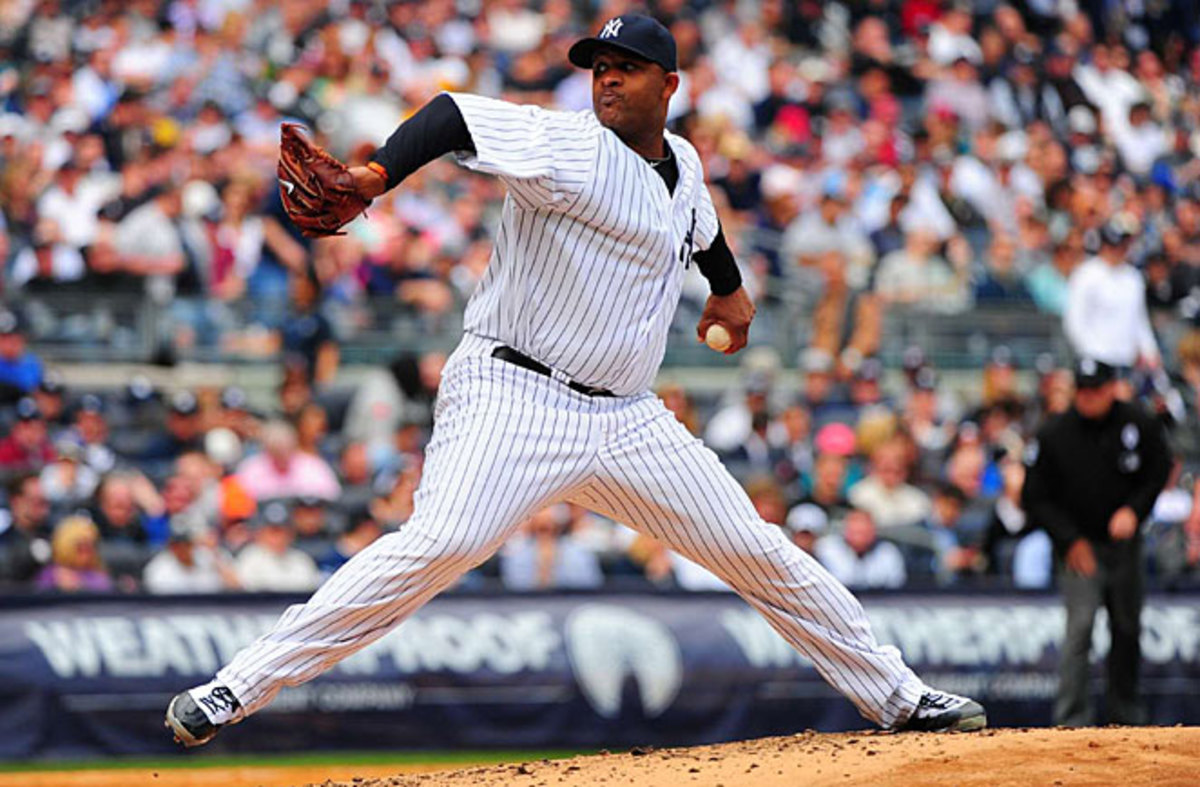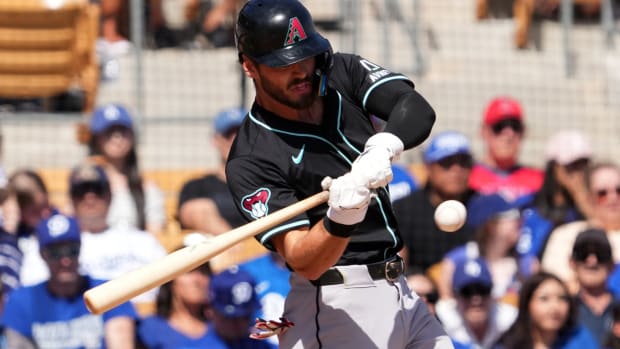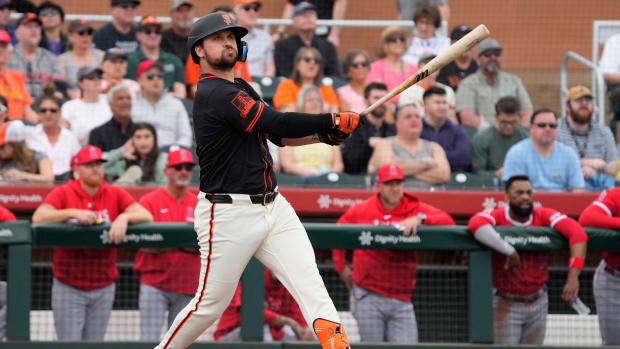
Aging aces slowing down and may take teams with them

CC Sabathia's drop in velocity will be a problem worth watching all season for the Yankees.
Al Tielemans/SI
1. These are strange days in baseball. When you talk about a pitcher needing to prove something, you often are talking not about young aces but about former All-Stars, including those with Cy Young Awards in their dens. Johan Santana, 34, is done for the year, and possibly for his career, because of shoulder surgery. And this week CC Sabathia, 32, Josh Beckett, 32, and Roy Halladay, 35, did nothing to put their teams at ease about how close they may be to their glory days.
From 2004-09, Sabathia, Halladay, Beckett and Santana ranked 1-2-10-11, respectively, in major leagues wins. They are pulling down a combined $84.25 million this year alone, largely the reward of those glory days. Now all of them seem to have entered a transitional phase in their careers -- can they still win big with less velocity? -- while the Great Pitching Era, off to a rousing start in Year 4, continues to skew younger.
No one is close to writing off Sabathia, Beckett or Halladay, all of whom are respected as much for their work ethic and competitiveness as for their talent. It's one start in 2013, folks.
But in each case there is a modicum of doubt every time they take the mound these days because of how they have been trending. Velocity readings are watched like stock tickers. And the Yankees (Sabathia), Dodgers (Beckett) and Phillies (Halladay) all need the doubts to recede, as each veteran pitcher is a critical piece of teams with high payrolls and high expectations.
The Yankees brushed off Sabathia's mediocre Opening Day start as a function of a winter elbow cleanup and a personal history of Sabathia starting seasons with lower velocity (a cover story that is not true, by the way. He averaged 92 mph with his fastball on Opening Day last year and averaged 92 during the season -- down an alarming 1.5 mph from 2011). Sabathia was throwing 89, just six miles an hour above his changeup.
Beckett came out throwing 90-91 miles per hour for the Dodgers. In his first start of the 2009 season, he averaged 95 mph.
Halladay has become a breaking ball pitcher without his trademark command. He did strike out nine batters in a weird start in the rain in Atlanta, but the man who once was the most efficient and aggressive pitcher in baseball labored badly. His fastball has been disappearing for years; he has lost three mph off his heater in three years and throws it less and less -- down to just 19 percent of his pitches last year. He relies on an abundance of cutters, curves and splits. Halladay can be successful with the new approach, but he seems stuck in an awkward transition of learning how to command his finesse pitches on the edges. They don't break quite as hard or as late to allow him to simply pound the strike zone.
Maybe the three old workhorses turn out to be just fine, and the first week of the regular season is forgotten. It wouldn't be a surprise if that was the case. But for now, all we have is this: Sabathia, Halladay and Beckett are 0-3 while allowing 14 runs in 14 1/3 innings and have diminished velocity. And the next start for each of them will be watched closely.
It's great that teams are locking up young aces to keep them in one uniform: Justin Verlander, Felix Hernandez, Matt Cain, Adam Wainwright, etc. But remember that velocity is a skill that declines with age -- and it is a skill that is proportional to late movement. These long contracts that pay pitchers into their mid-30s have to assume that today's young aces will become tomorrow's transitional pitchers.
2. Astros are doomed but did it didn't have to be this bad
The least predictable baseball season ever -- never before have there been so many teams with a chance to win it all -- does have one measure of certainty: The Astros are a very bad baseball team. They are so bad they may be entertaining -- if you find entertainment, anyway, in keeping tabs on whether they challenge the 2010 Diamondbacks for most strikeouts in a season (1529) or, yes, the 1962 Mets for the most losses since 1899 (120).
Houston struck out 43 times in three games against Texas, a major league record to start a season. Each Rangers starter (Matt Harrison, Yu Darvish and Alexi Ogando) tied or set a career high in strikeouts. It was ugly. The Astros walked only four times and repeatedly chased two-strike pitches well out of the strike zone.
This isn't going to get much better. Afterall, Houston lost 107 games last year -- and now it has less talent and plays a much tougher schedule (having moved from the NL Central to the AL West.)
The Astros are getting what they paid for: the team with the lowest payroll in baseball by far ($24 million) is the worst team by far. Just how low is the Houston payroll? Despite huge revenue increases that have turned baseball into a $7.5 billion business, and despite what Forbes said is an annual fee of $80 million from their new regional sports network deal, the Astros are playing with a payroll that would have been the lowest in baseball 11 years ago, in 2002!
Of course, it makes sense not to spend unwisely when you only have begun a massive rebuilding phase. But you still need to spend enough on established major leaguers, however mediocre, if only to protect your brand from the threat of historic embarrassment (as the Cubs have done with Edwin Jackson, Scott Baker, Nate Schierholtz, etc.) Houston chose not to do that and play with a bare-bones payroll.
3. The legend of The White Bear
One of the best stories from opening week was the debut of El Oso Blanco. The story of Atlanta catcher Evan Gattis, who picked up the nickname while crushing Venezuelan winter league pitching (the nickname means "The White Bear"), is a movie waiting to happen.
Here's the movie pitch: high school kid from Texas signs to play at Texas A&M. Develops anxiety over the thought of big time college baseball and spirals into drug and alcohol dependency. Winds up in rehab. Then junior college, where he hurts his knee, loses his love for baseball and quits. Spends four years drifting around the West doing odd jobs: ski lift operator, janitor, Yellowstone Park employee. Seeks out spiritual advisors in California. Gets the itch to play again. Goes to a D-II school in Texas. Rakes like he never left. Gets drafted in the 23rd round by the Braves in 2010. Three years later he makes the Opening Day roster. In his major league debut, while his father is interviewed on TV, he hits a home run off a former Cy Young Award winner, Roy Halladay. The ball lands in the hands of a guy from . . . Texas A&M.
Ah, forget it. Nobody would believe it.


































